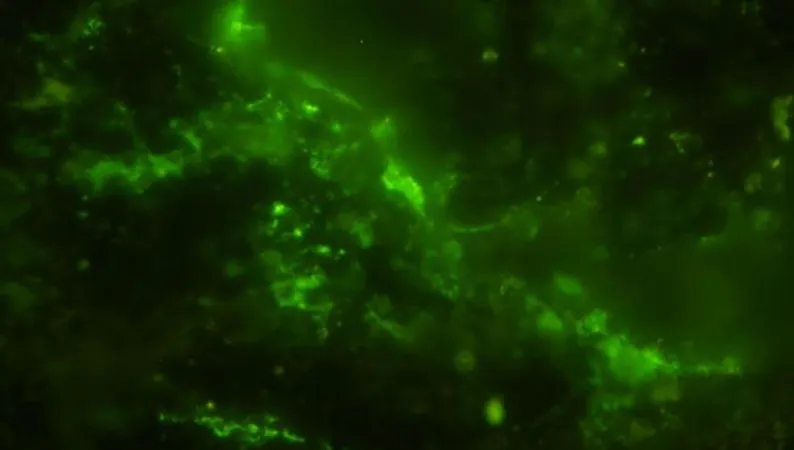
2-Billion-Year-Old Rock Unveils Living Microbes – Could They Hold Secrets to Early Life on Earth?
2024-10-04
Groundbreaking Discovery in South Africa
In a groundbreaking discovery hailing from South Africa, scientists have unearthed a 2-billion-year-old rock that is home to living microbes, marking the oldest known examples of life pulled from ancient geological layers. This astonishing find not only reshapes our understanding of ancient life forms but also opens new avenues in the search for extraterrestrial life.
Insights from Researchers
Yohey Suzuki, a researcher from the University of Tokyo and lead author of a recent study, expressed the significance of this find: "We didn’t know if 2-billion-year-old rocks were habitable. Until now, the oldest geological layer in which living microorganisms had been found was a 100-million-year-old deposit beneath the ocean floor, so this discovery is incredibly exciting." By analyzing the DNA and genomes of these microbes, scientists believe they can gain insights into the evolution of early life on Earth.
Location and Environment
The microbes were located within a sealed fracture of the Bushveld Igneous Complex, an area rich in mineral deposits and the size of Ireland. This ancient rock formation is a remnant of magma that cooled slowly beneath the Earth's surface, creating an exceptionally stable environment that has preserved these microorganisms for eons.
Adapting to Isolation
These organisms have adapted to life deep underground, possessing a slow metabolic rate that allows them to survive in isolation from the external environment for vast geological periods – potentially up to 2 billion years, as this study suggests. Researchers drilled 15 meters (49 feet) into the earth to extract a 30-centimeter (12-inch) rock core sample, uncovering living microbial cells snugly packed in fractures, ensconced by clay layers which shielded them from contamination.
Verifying the Findings
To verify that these microbes originated from the rock sample rather than being contaminants introduced during the extraction process, the team employed innovative methods including DNA staining and infrared spectroscopy. Their pioneering technique, developed in 2020, enabled them to affirm the legitimacy of these ancient organisms, ruling out any contamination.
Implications for Extraterrestrial Life
The implications of this discovery extend beyond our planet. Suzuki noted, “I am very interested in the existence of subsurface microbes not only on Earth, but also the potential for finding them on other planets.” While the rocks on Mars are generally much older, the ongoing work of NASA’s Mars rover Perseverance may soon yield rock samples comparable in age to those investigated in this study. The excitement lies in the possibility that if life could exist for billions of years within Earth's subterranean realms, similar microbial life could potentially reside beneath the Martian surface as well.
Looking to the Future
This discovery not only enriches our understanding of microbial resilience but also amplifies the quest to uncover the origins of life, both on our planet and beyond. What secrets could these ancient microbes hold, and how might they rewrite the history of life on Earth? Stay tuned as researchers delve deeper into this fascinating subject.


 Brasil (PT)
Brasil (PT)
 Canada (EN)
Canada (EN)
 Chile (ES)
Chile (ES)
 España (ES)
España (ES)
 France (FR)
France (FR)
 Hong Kong (EN)
Hong Kong (EN)
 Italia (IT)
Italia (IT)
 日本 (JA)
日本 (JA)
 Magyarország (HU)
Magyarország (HU)
 Norge (NO)
Norge (NO)
 Polska (PL)
Polska (PL)
 Schweiz (DE)
Schweiz (DE)
 Singapore (EN)
Singapore (EN)
 Sverige (SV)
Sverige (SV)
 Suomi (FI)
Suomi (FI)
 Türkiye (TR)
Türkiye (TR)